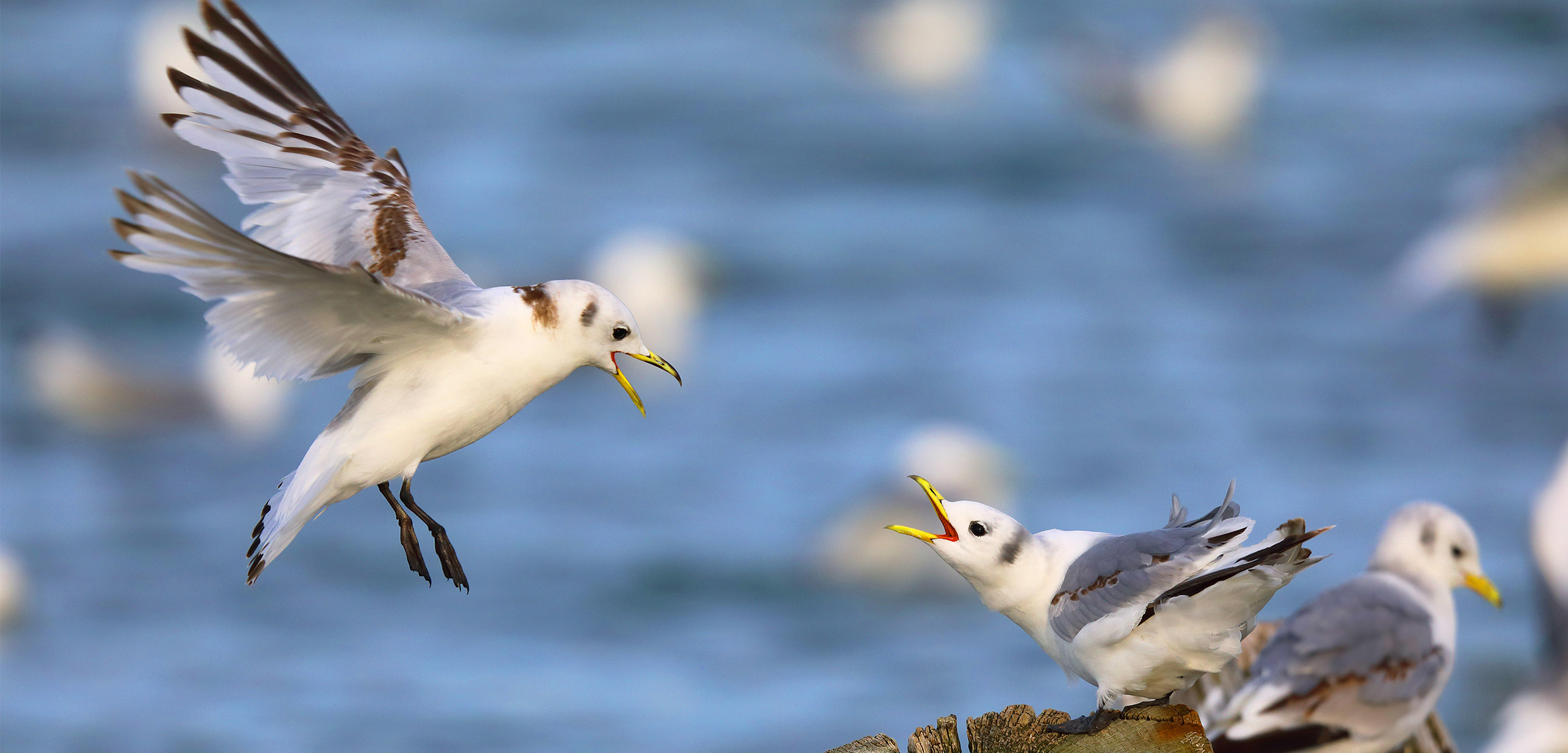These Birds Are Never, Ever, Ever Getting Back Together
Personalities play a role in whether seabirds “divorce”—but sometimes climate change does, too.
Article body copy
Scientists who study animals sternly warn their trainees about the dangers of describing research subjects in human terms. Sometimes, though, the parallels are impossible to ignore. “Human beings and seabirds are very different, but there are some things that we definitely share,” says Fionnuala McCully, a PhD candidate studying seabirds at the University of Liverpool in England. “We’re both long-lived, we’re both comparatively slow breeders, and we both thrive off cooperation and compatibility.” And many species of seabirds choose to mate for life, as humans often do.
Also like people, these mostly monogamous birds sometimes call it quits with their partners. When scientists like McCully study these bird breakups, the word they use to describe them is divorce. Several recent studies reveal the strikingly humanlike reasons for some seabird splits.
Birds, too, have individual personalities, and perhaps it shouldn’t come as a surprise that these personalities play a role in their relationships. Shy wandering albatross males, for example, divorce more often than bold males. Researchers suspect shy males are less lucky in love because they don’t defend their mates aggressively enough when intruding males make advances.
McCully’s research on black-legged kittiwakes takes this idea a step further, finding that couples are more likely to break up if they have opposite personalities: a bold male paired with a shy female, for instance. The reason for the split, she learned, is that birds with incompatible personalities lose more chicks, a tragedy that also caused kittiwakes to divorce in a previous study. (If you’re wondering how McCully and her colleagues determine a bird’s boldness, the answer involves testing how it reacts to a novel object—in this case, a blue plastic penguin toy named Butch.)
When divorced kittiwakes move on, they tend to choose new mates more like themselves. “Seabirds generally cannot be single parents because the conditions are too harsh. They have to have a partner who they can work with,” says McCully. Having a similar personality might help a bird better understand and predict its mate’s behavior, making the work of catching fish and feeding chicks go more smoothly.
But being able to read a partner’s mind isn’t a perfect salve. Outside stressors can still throw a wrench into relationships—with grim implications for populations of vulnerable seabirds.
When Francesco Ventura, then a graduate student at Portugal’s University of Lisbon, started studying black-browed albatrosses in the Falkland Islands, he noticed that the number of pairs divorcing changed from year to year. Ventura decided to figure out why.
Like with black-legged kittiwakes, albatross divorces tend to follow the death of a chick. A recent study of thick-billed murres also shows this pattern, which scientists believe occurs in most seabird breakups. Some of the divorces Ventura witnessed, however, can’t be explained by such a loss. His analysis finds that more birds part ways after years when the sea surface is unusually warm—whether their chicks live or die.
Warmer ocean temperatures typically mean less food for albatrosses and more challenges to raising healthy offspring. The following year, the parents—still exhausted from searching for fish to feed their chicks—may arrive late at the breeding grounds and fail to reconnect with their partner. Or, run-down birds might unfairly blame their poor state on their companion and kick them to the curb.
Seabirds often struggle to raise chicks in the first few years with a new mate. For birds fresh out of poor partnerships, that initial dip is a small price to pay. Scientists expect that finding a new, more compatible mate allows divorcees to produce a greater number of offspring throughout their long lives; the new pair just needs to hit their stride. But if the albatrosses in Ventura’s study are splitting up with perfectly good partners because of environmental disruption—something that will only become more common as climate change ramps up—the birds may struggle to find a better mate and, as a result, may never make up for the short-term cost of switching companions.
Although Ventura studied one of the few albatross colonies that’s growing, seabirds are one of the world’s most threatened groups of birds. In smaller populations, more frequent disruptions to pair bonds, on top of threats like invasive predators and habitat destruction, could accelerate declines, says Ventura.
So if you ever find yourself picking a fight with your partner because you’re stressed about current events, at least you’re not alone. It can happen to any of us—human or bird.

